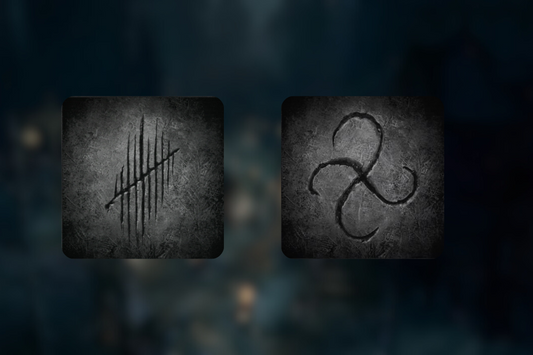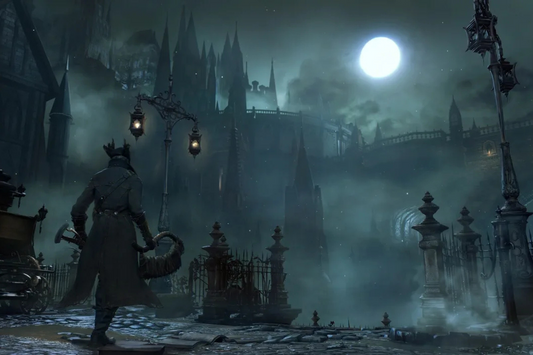When BioShock launched in 2007, it didn’t just change the way people looked at shooters—it redefined what video game storytelling could be. At the heart of that transformation was Rapture, a city buried beneath the sea, brimming with philosophical ambition, broken dreams, and haunting beauty. Years later, Rapture remains one of the most iconic and immersive settings in gaming history. This retrospective takes a deeper look into the world of BioShock, the fall of Rapture, and why its story still resonates so powerfully in 2025.
The Rise of a Utopia Beneath the Waves
Rapture wasn’t just a backdrop—it was the heart of BioShock’s narrative. Conceived by the industrialist Andrew Ryan, the city was built to be a refuge for the best and brightest of humanity. No gods, no kings—only man. That was Ryan’s vision: a place where artists, scientists, and entrepreneurs could flourish without the interference of governments or morality. What players discover upon entering Rapture, however, is not the triumph of that vision, but its ruins.
The Art Deco architecture, the eerie flickering lights, and the constant creaking of metal under pressure all work together to tell the story of a paradise lost. Rapture is at once beautiful and terrifying, a monument to humanity’s ambition—and its arrogance.
The Plasmid Problem and Rapture’s Collapse
What ultimately led to Rapture’s fall wasn’t war or famine, but the unchecked pursuit of scientific advancement. The discovery of ADAM, a substance harvested from genetically modified sea slugs, allowed for superhuman abilities through plasmid enhancements. Initially seen as a miracle breakthrough, ADAM quickly became an addiction, corrupting Rapture from the inside out.
As the population chased power and perfection, society unraveled. Splicers—former citizens mutated beyond recognition—roamed the halls. Civil order collapsed, and Ryan's utopia turned into a nightmare. The same freedoms that once made Rapture a dream became the tools of its destruction. In this way, BioShock becomes more than a shooter—it becomes a commentary on ideology taken to its extremes.
A Masterclass in Environmental Storytelling
Every corner of Rapture tells a story. You don’t just learn about the city from cutscenes or dialogue—you learn it by seeing the remnants of what once was. Abandoned nursery rooms, bloodstained ballrooms, and shattered labs all whisper stories of lives lost and ideals crushed. Audio logs scattered throughout the city add to this texture, providing intimate insights into the thoughts and fears of Rapture’s citizens as everything fell apart.
What sets BioShock apart is how seamlessly it blends narrative with gameplay. It never pulls you out of the world to explain itself. Instead, it lets you explore and uncover its mysteries at your own pace. That design choice is a big part of why Rapture still feels alive—even in its death.
The Twist That Changed Everything
Perhaps BioShock’s most unforgettable moment is its infamous twist. For most of the game, you follow the instructions of a man named Atlas, trusting his guidance as you fight your way through the ruins of Rapture. But then comes the reveal: you’ve been under mind control the entire time. The phrase “Would you kindly...” wasn’t just a polite request—it was a command.
This moment shattered the illusion of choice and forced players to rethink everything they’d done. In a game all about free will and control, BioShock flips the script and asks whether you ever had a choice at all. It’s a twist that not only surprises—it elevates the game’s themes to new heights and remains one of the most talked-about moments in gaming.
The Legacy of Rapture
BioShock 2 returned players to Rapture, offering a new perspective through the eyes of a Big Daddy. While it didn’t capture the same shock and awe as the original, it deepened the emotional stakes and expanded the lore. The city itself remained the main character—still broken, still dangerous, but still compelling.
Years later, Rapture continues to influence games across genres. Its design, atmosphere, and storytelling have become a benchmark for immersive world-building. Whether you’re exploring the city for the first time or revisiting it with a fresh eye, there’s always something new to discover beneath the waves.
Why It Still Matters in 2025
In a gaming world that constantly evolves, few settings hold up as well as Rapture. It’s not just nostalgia that keeps players coming back—it’s the depth, the complexity, and the emotional weight of the story. BioShock invites players to question not only the world around them but their role within it. It explores themes of power, freedom, and consequence in a way that feels more relevant than ever.
For many players, BioShock was a turning point. It proved that games could be thought-provoking, artistically ambitious, and emotionally resonant. And at the center of that achievement is Rapture—a city that dreamed too big and fell too hard, but left behind a legacy that’s impossible to ignore.
Final Thoughts
BioShock isn’t just remembered for its combat or its powers—it’s remembered for its world. Rapture was more than a setting. It was a character. It lived, it breathed, and it died in front of you. And in that death, it taught lessons about vision, ambition, and the price of unchecked ideals.
Even today, Rapture remains a haunting reminder of what happens when freedom turns to obsession. It stands as a milestone in game design and storytelling—a place we revisit not for what it gave us, but for what it continues to make us feel.
Our BioShock-inspired merch is the perfect way to carry that atmosphere into the real world. From graphic tees echoing the haunting elegance of the city to art prints that capture its eerie beauty, our collection lets you wear your love for BioShock proudly. Dive into our exclusive BioShock merch and take a piece of Rapture with you.








